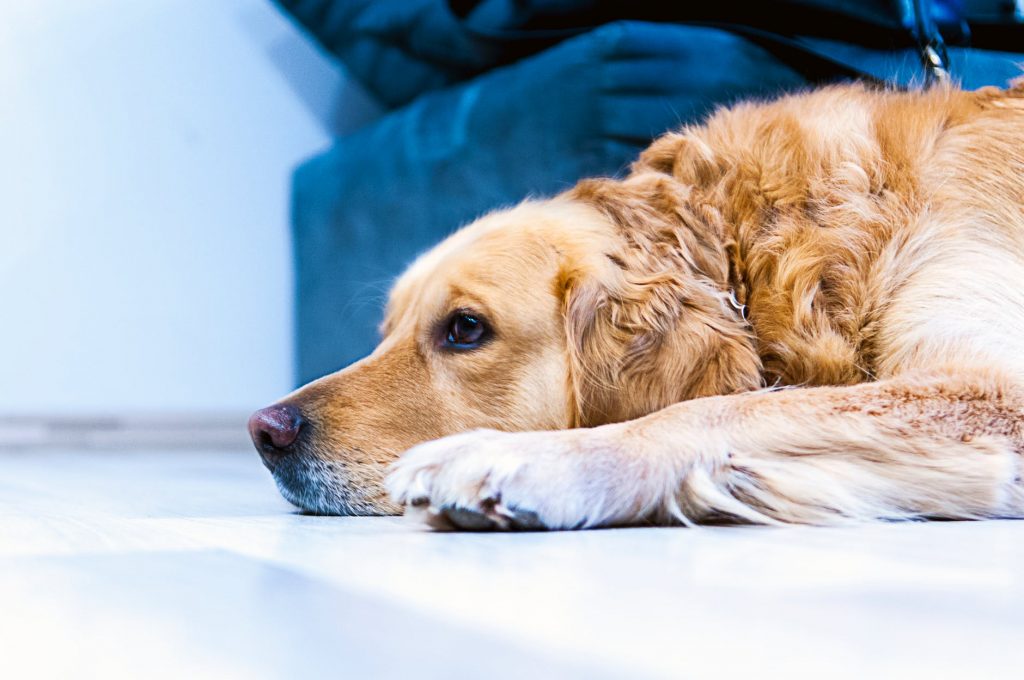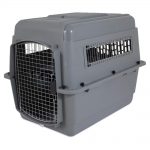Helping Your Dog Adjust to a New Home
Image Source: pexels.com
Moving can be stressful for humans, but even more for pets. Dogs may feel unsure or anxious about being in a new environment which can lead to behavioral issues that weren’t a problem in the past. Pets may have trouble adjusting to a new home because they can also sense and feel their owners’ emotions about moving. This can also result in territorial behavior in dogs.
Whether getting a new puppy or moving with an existing dog, it should be expected that they would need a few days to settle in and make the new home feel like their own. Of course if you have any questions about how to accomplish your pet’s move, Petmovers.com is available to help.
Preparing for the Move
New Dog, Same Home
If you’re about to get a new dog, preliminary visits are recommended. When having the dog visit the new home, it should not be separated from the former owner or its foster family. Once you have officially adopted the dog, the previous owner should not visit as it may only upset and confuse your dog.
Dogs adjust with more ease if the move is made in the morning rather than later hours as dogs feel more insecure in the evenings. You should get your dog brand new things such as food and water bowls, a crate, toys, and familiar food. The foster home or former owner should also include toys or bedding with scents that the dog is familiar with.
Old Dog, New Home
If you are moving with your dog, taking your dog to the new home for a visit before the move can help your dog familiarize itself with the new environment. If you’re moving closer to your old home, stop by the new house when you take him out for a walk.
Safety is Key
During the move and the transition into the new home, everything won’t be in its correct place, and there will be a lot of boxes, which can upset and confuse the dog. That’s why it’s ideal to get help from professional pet movers.
Having a lot of boxes and even suitcases may result in your dog hiding or running away. Make sure to move your dog’s things the same day that you will be moving into the house so that the dog will have a safe space where they can’t get hurt. If your dog is particularly anxious or uncomfortable when in the process of moving, have him stay a few nights with a friend that it has stayed with before is a good idea.
Moving Into a New Home
Familiarize
When you first arrive at your new home with the dog, it’s recommended to take your pup into the backyard so that it may relieve itself in its preferred area. This is to tell the dog that the yard is now its new territory and that you are encouraging him to do his business outside. After this, take the dog around the house using a leash so he can investigate. Keep the dog close and do not leave him unsupervised. Once you feel like your dog is getting more comfortable, try crating him in a separate room and see if the dog is comfortable being away from you for a short time.
Be Consistent
Having a consistent schedule or keeping your dog’s old routine for feeding, walks, bedtime, and playtime is one of the best ways to help your dog adjust. Having the same things for your dog in your new house will help your dog feel less confused. If your old home had a doggy door, install one for the new house. Make sure that the backyard is also secure so that the dog won’t be able to run away. You may use pet containment systems such as an invisible dog fence.
Be Patient
A great way to help your dog adjust to your new home is by taking one step at a time. It may take a few days or weeks for your dog to adjust. Give the dog some time to sniff around and explore his new home. If the dog hides under the bed or furniture, let him be as the dog will come out when he is ready. Forcing the dog into a new environment may only heighten its anxiety.
Bring Your Dog’s Favorites
You may think that your dog needs new things because of the new home, but it’s actually not that great to get rid of the things that your dog is familiar with. During the move, bring your dog’s favorite toys, treats, and other familiar items and place them in similar areas as they were in your old home. This will help your dog feel at home quicker.
The Aftermath of the Move
Training Refresher
Going back to “puppy” rules for the first couple of weeks can make everything easier for you and the dog. Keep your dog on a leash and watch them for accidents. Anxious and nervous dogs tend to chew and destroy. If leaving them unattended, make sure to keep the crate away from dangerous objects that may cause harm to your dog.
If you can’t keep the dog from sticking to their old routine due to your new schedule, you need to make sure to train the dog to follow a new one. Make sure that the dog knows where it can and cannot go.
Playtime
Playtime with your dog can take a hit when in the process of moving. Make sure that your dog is still getting the same amount of attention it was getting before the move. If your dog is trained to bring something to you, you can try to incorporate playtime when unpacking boxes as this can alleviate stress. Take your dog for a walk in your new neighborhood. Visit the local dog park so your dog can meet new friends and you can also take this time to get to know your new community.
Other Tips
Once you are all settled into your new home, try not to add stress to your dog by having a housewarming party as your dog may still be wary of visitors in the new home. Give the dog time to acclimate to the new house before inviting company.
You should also avoid added stressors. For example, if your dog does not like getting its nails trimmed or having a bath, don’t do this immediately in your new home. If your dog needs to be groomed, do it before moving.
Vomiting, Diarrhea, or a decreased appetite are signs of stress. Once your dog shows these symptoms, you may want to take your dog to a veterinarian so that he may be prescribed with medication that can calm him. Anxiety shirts are also recommended to help your dog feel more secure. You should watch out for any signs of stress as the moving process can easily make your pet sick.
Author’s Bio:
 Deinah Storm is a pet lover from the US that’s had cats and dogs all her life. When she’s not walking the dogs with her family, she spends time writing informational and interesting blogs about pets to share with pet lover communities.
Deinah Storm is a pet lover from the US that’s had cats and dogs all her life. When she’s not walking the dogs with her family, she spends time writing informational and interesting blogs about pets to share with pet lover communities.






